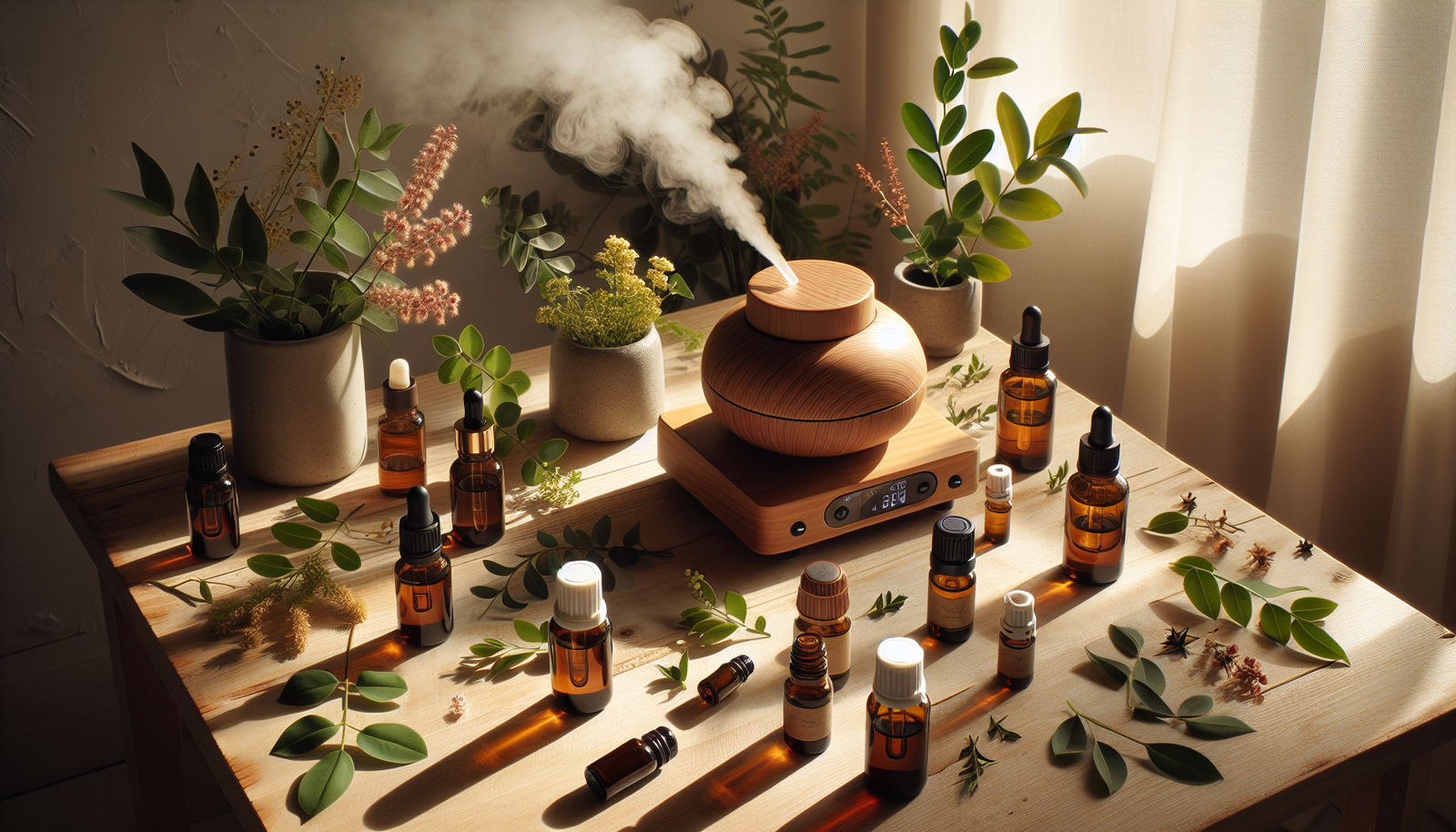Essential Oils for Mood Support: A Beginner’s Guide
Essential Oils for Mood Support: A Beginner’s Guide
Understanding Essential Oils
Essential oils are concentrated plant extracts that capture the natural fragrance and beneficial properties of various plants. These oils are typically obtained through distillation or cold-press extraction from flowers, leaves, bark, stems, and roots. Due to their potent aromatic qualities, essential oils have found their way into aromatherapy, wellness practices, and natural remedies, especially for mood support.
How Essential Oils Affect Mood
The impact of essential oils on mood stems from their complex chemical compositions, which can influence emotions and psychological states. When inhaled, the scent molecules travel through the olfactory system to the brain’s limbic system—the area associated with emotions, memory, and arousal. This unique interaction can lead to either relaxation or an invigorating effect, depending on the specific essential oil used.
Popular Essential Oils for Mood Support
-
Lavender Essential Oil (Lavandula angustifolia)
- Benefits: Renowned for its calming properties, lavender oil is one of the most popular essential oils for managing anxiety and promoting restful sleep.
- Uses: Diffuse in the evening, add to baths, or apply diluted to pulse points for a soothing effect.
-
Peppermint Essential Oil (Mentha piperita)
- Benefits: Known for its refreshing and uplifting properties, peppermint oil can enhance mental clarity, reduce fatigue, and improve focus.
- Uses: Inhale directly or diffuse while studying or working to boost concentration.
-
Bergamot Essential Oil (Citrus bergamia)
- Benefits: This citrus oil is believed to reduce feelings of sadness and anxiety while promoting a cheerful mood.
- Uses: Diffuse in social settings or apply diluted to the skin for a mood-enhancing aroma.
-
Ylang-Ylang Essential Oil (Cananga odorata)
- Benefits: Associated with feelings of joy and relaxation, ylang-ylang is often used to reduce stress and enhance positive emotions.
- Uses: Blend with a carrier oil for a calming massage or diffuse for an uplifting atmosphere.
-
Frankincense Essential Oil (Boswellia carteri)
- Benefits: Known for its grounding properties, frankincense helps promote feelings of calmness and peace, making it ideal for meditation practices.
- Uses: Add to a diffuser during meditation or yoga for deeper relaxation.
-
Lemon Essential Oil (Citrus limon)
- Benefits: This bright and refreshing oil can help elevate mood, reduce stress, and instill a sense of positivity.
- Uses: Use in diffusers or as a refreshing room spray to cleanse the air and boost morale.
- Rose Essential Oil (Rosa damascena)
- Benefits: Valued for its warm, romantic scent, rose oil is known for promoting love, compassion, and emotional balance.
- Uses: Apply locally or diffuse to create a tranquil environment conducive to relaxation.
How To Use Essential Oils Safely
- Dilution: Essential oils are potent and should be diluted with a carrier oil (like coconut, almond, or jojoba oil) before applying to the skin to avoid irritation.
- Patch Test: Always perform a patch test by applying a small amount of diluted oil to an inconspicuous area to check for adverse reactions.
- Inhalation: Diffusion is a common method of inhaling essential oils, but you can also inhale directly from the bottle or through a tissue.
- Consultation: Pregnant or nursing individuals and those with specific health conditions should consult with a healthcare professional before using essential oils.
Blending Essential Oils for Mood Support
Creating custom blends can enhance the mood-supportive qualities of essential oils. Here’s a simple guide to blending:
-
Select Your Base: Choose one or two oils for their primary mood-enhancing properties (e.g., lavender for relaxation).
-
Complementary Oils: Add complementary oils that enhance or balance the effect (e.g., bergamot for a boost).
-
Proportions: Start with a basic ratio of 3 drops of the base oil to 2 drops of the complementary oil. Adjust based on preference.
- Carrier Oils: When applying to the skin, dilute your blend in a carrier oil at a ratio of 1:4 (1 part essential oil blend to 4 parts carrier oil).
Simple Recipes for Mood Support
-
Calming Roller Blend
- 2 drops Lavender
- 2 drops Frankincense
- 2 drops Ylang-Ylang
- Mix with 10ml of carrier oil in a roller bottle for on-the-go application.
-
Uplifting Room Spray
- 5 drops Lemon
- 5 drops Bergamot
- 5 drops Peppermint
- Combine in a spray bottle with distilled water and a small amount of vodka or witch hazel to mix.
- Sleep Ritual Blend
- 3 drops Lavender
- 2 drops Cedarwood
- Mix in a diffuser in your bedroom while preparing for sleep.
Incorporating Essential Oils into Your Daily Routine
-
Morning Motivation: Start your day with an uplifting morning routine. Use energizing oils, like lemon and peppermint, while showering or during morning meditation.
-
Office Environment: Make your workspace pleasant and motivating. Diffuse peppermint or bergamot to maintain focus and lift your spirits.
- Evening Wind Down: Use calming oils like lavender or chamomile in the evening to signal to your body that it’s time to relax.
Storage and Shelf Life of Essential Oils
To maintain the efficacy of essential oils, store them in a cool, dark place, away from sunlight and heat sources. Most essential oils have a shelf life of 1-3 years, depending on the type. Citrus oils may have shorter shelf lives due to their chemical composition.
Considerations When Using Essential Oils
- Sensitivity: Some individuals may be sensitive to certain oils, so always use caution when trying new essential oils.
- Avoid Ingesting: Essential oils are highly concentrated and should not be ingested unless under the guidance of a qualified professional.
- Children and Pets: Exercise caution when using essential oils around children and pets, as they often have heightened sensitivities.
Using Essential Oils with Other Therapies
Essential oils can be complimentary to other mood-supporting therapies such as psychotherapy, mindfulness practices, and physical exercise. When integrated into a broader wellness plan, they may enhance overall mood and emotional well-being.
Finding Quality Essential Oils
Choose reputable brands that provide information on sourcing, distillation processes, and purity testing (GC/MS testing). Look for oils labeled as 100% pure, organic, or therapeutic grade for the best results.
Conclusion
Essential oils present a natural, effective method of supporting mood and emotional well-being. With a variety of oils to choose from, beginners can easily incorporate essential oils into their daily routines for a proactive approach to mood management. By understanding the unique properties and uses of each oil, you can create an environment that enhances positivity, reduces anxiety, and fosters emotional balance.








